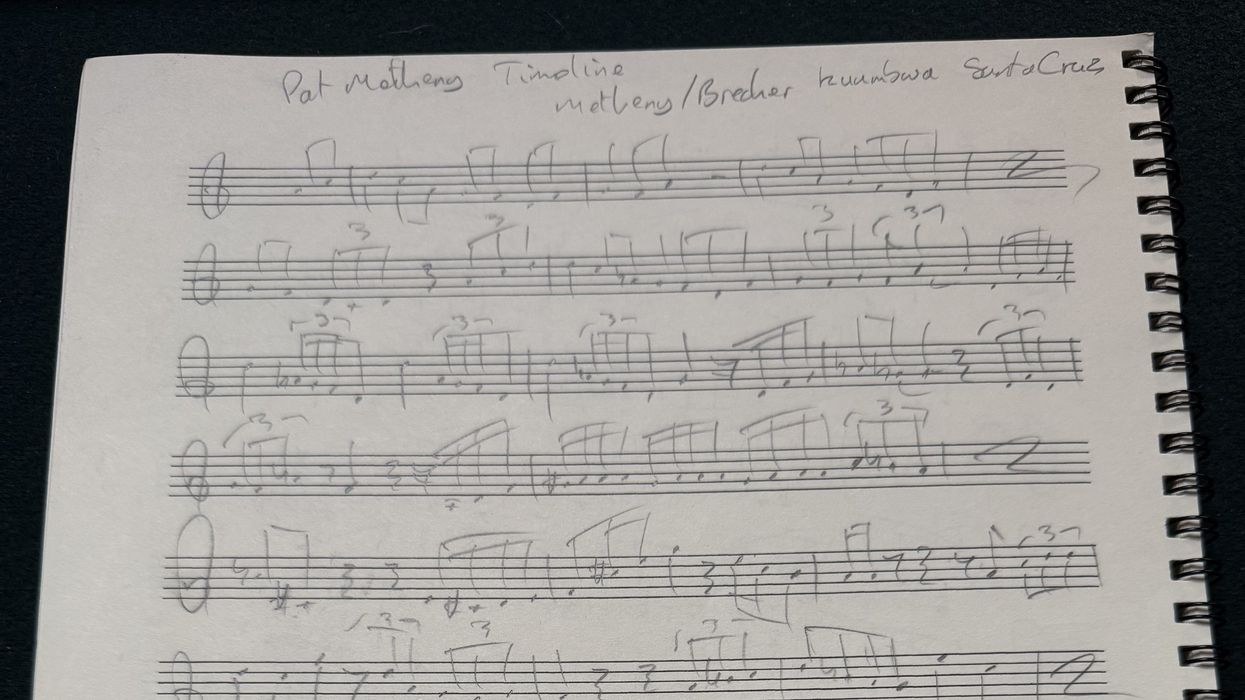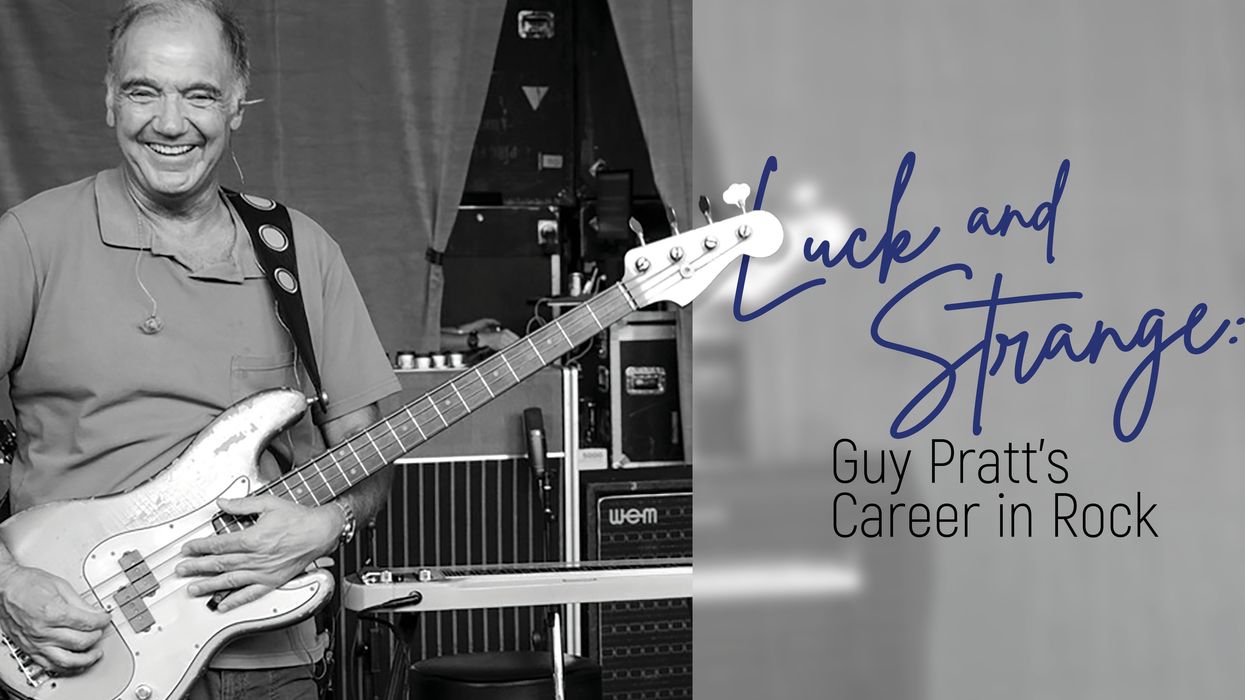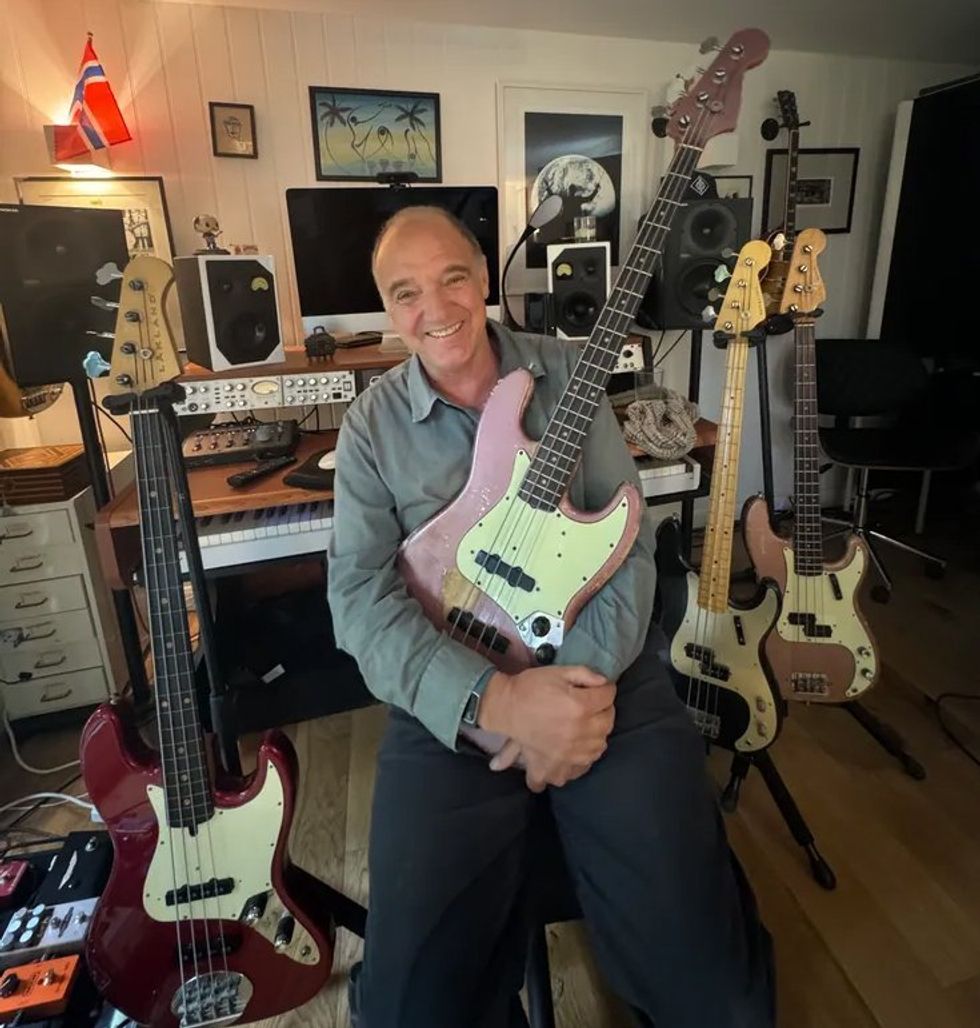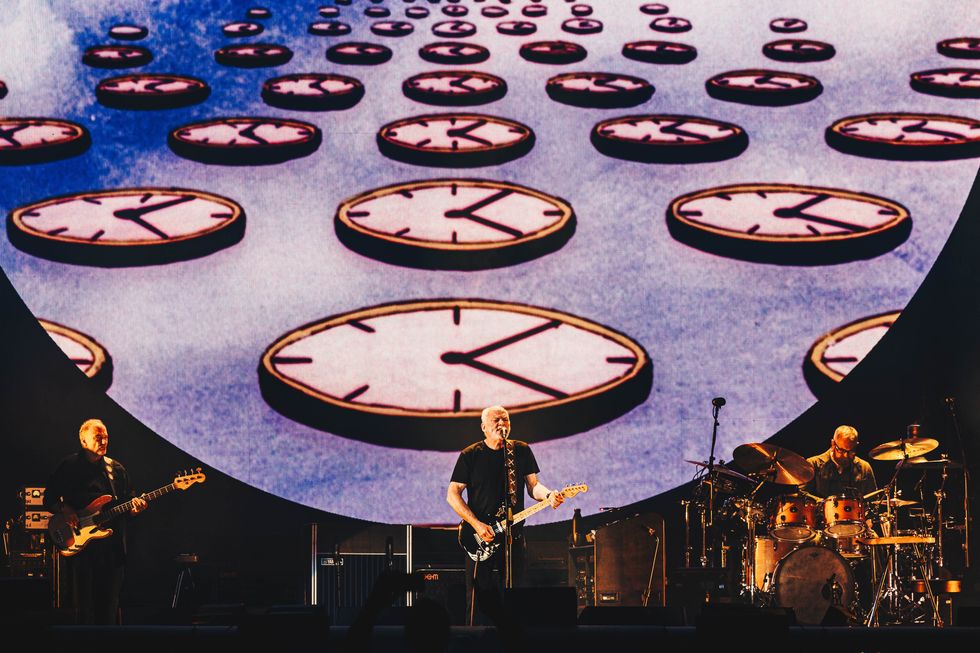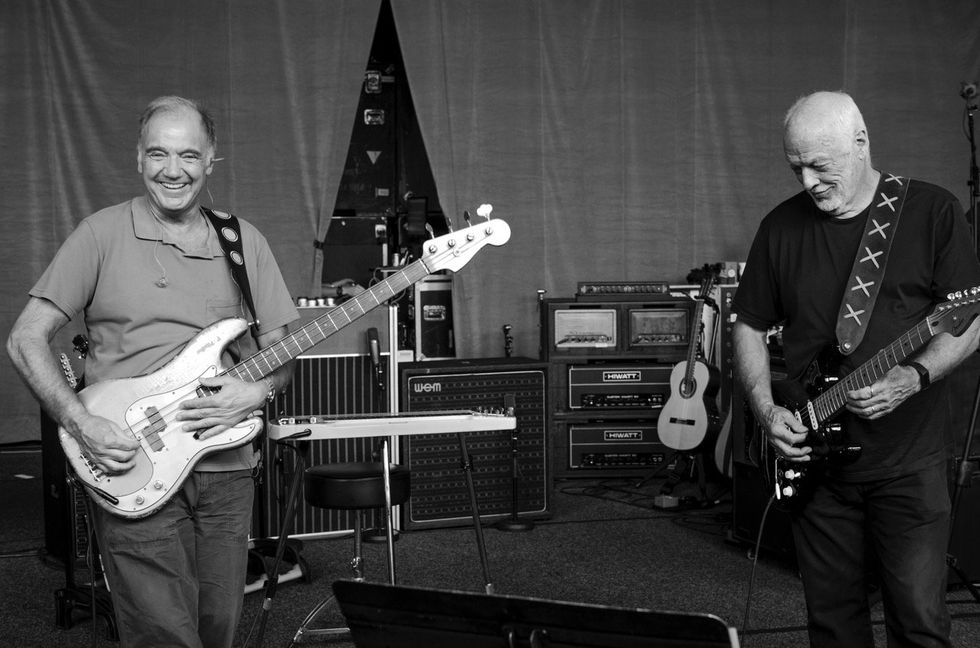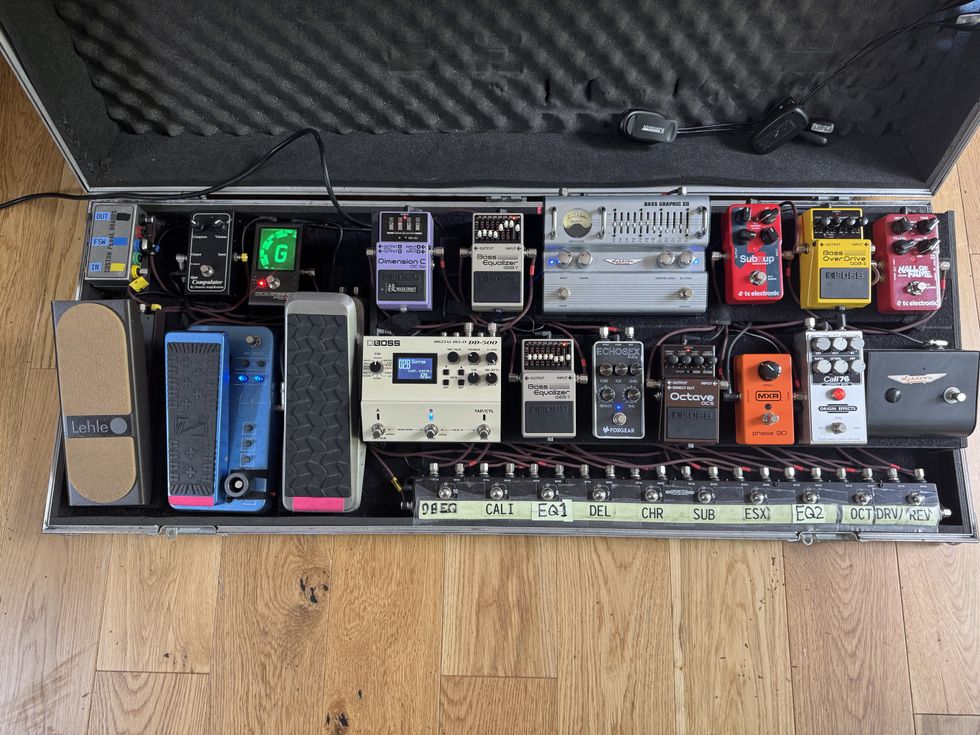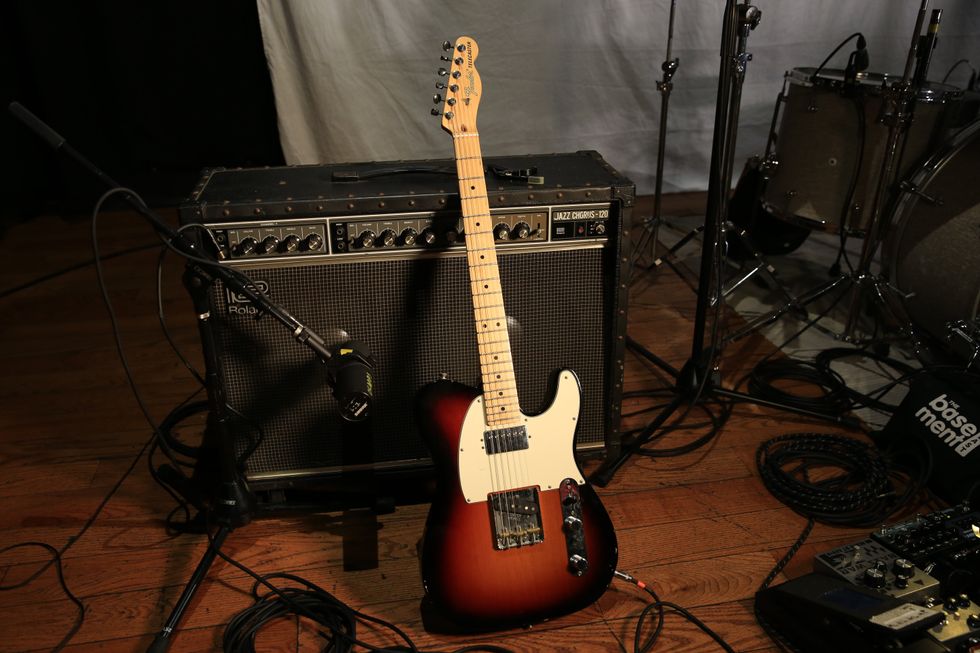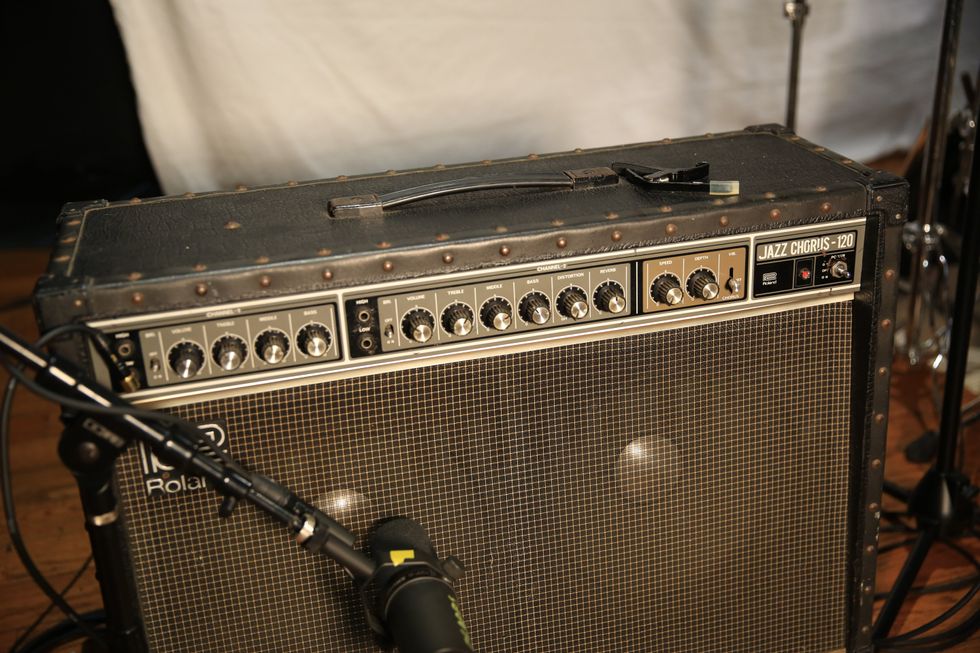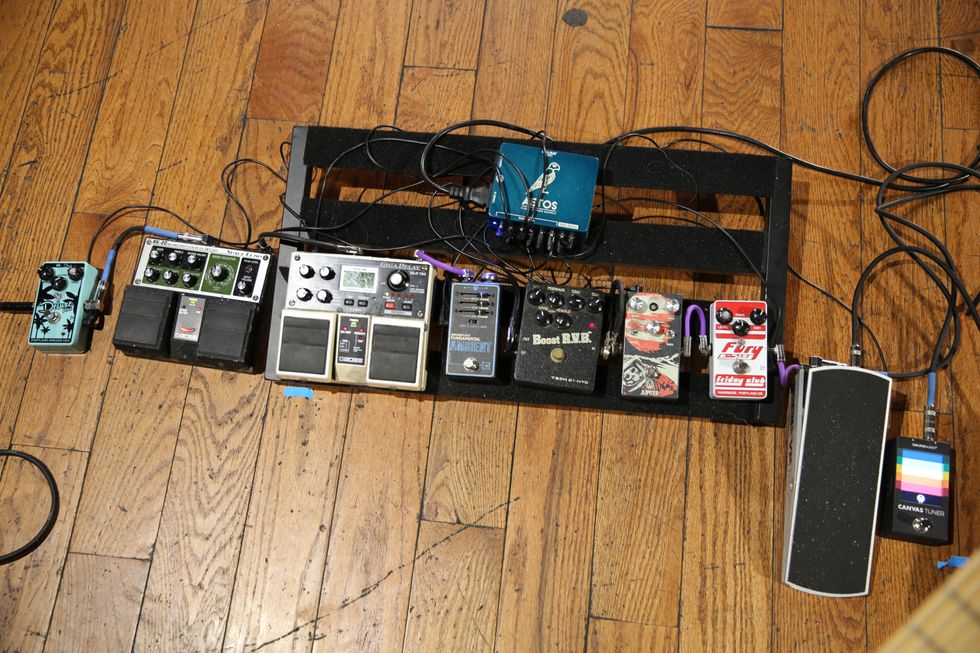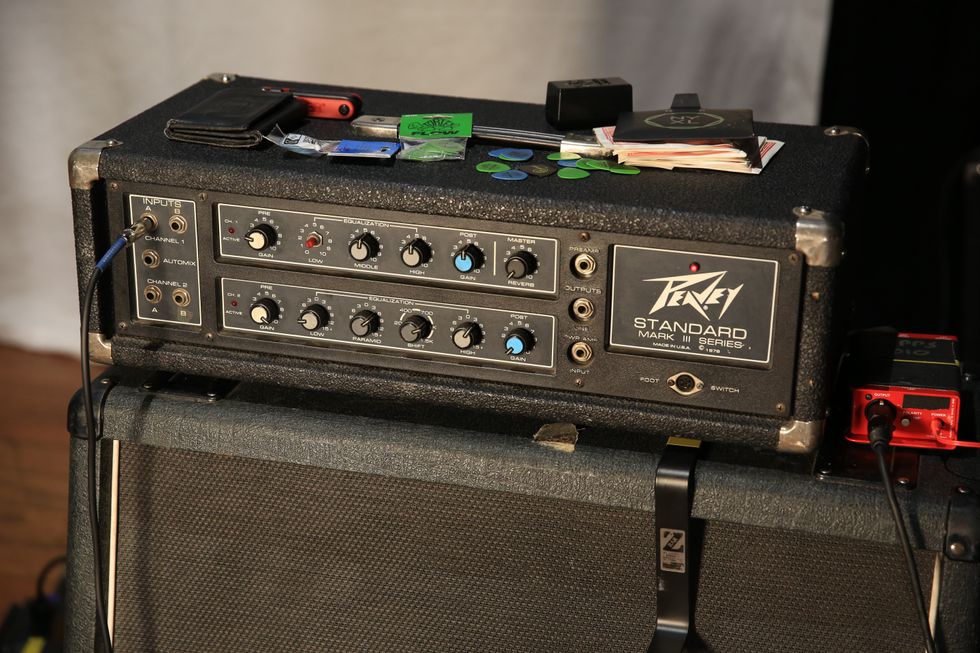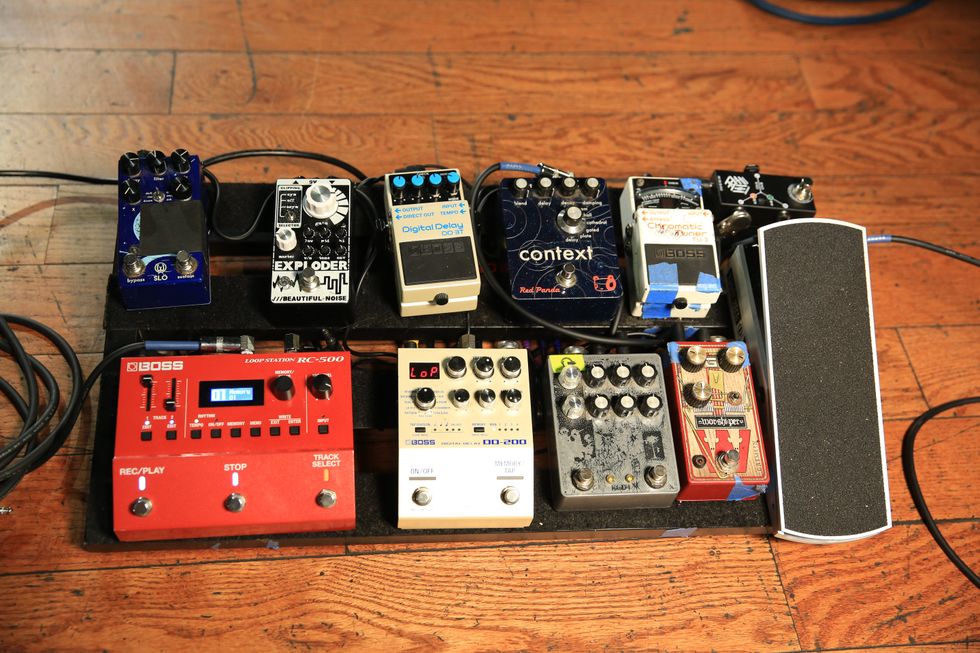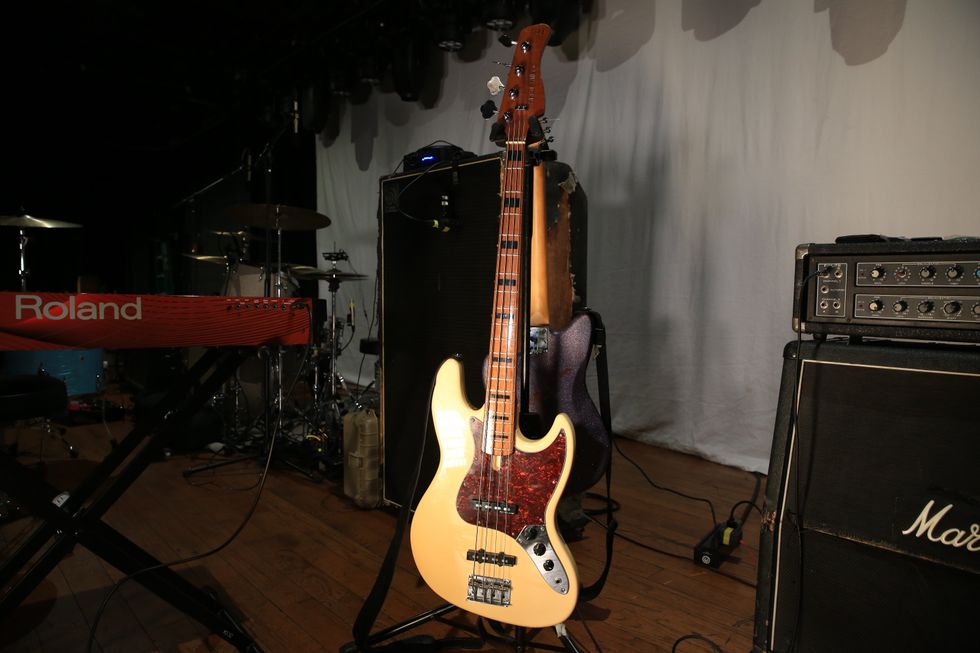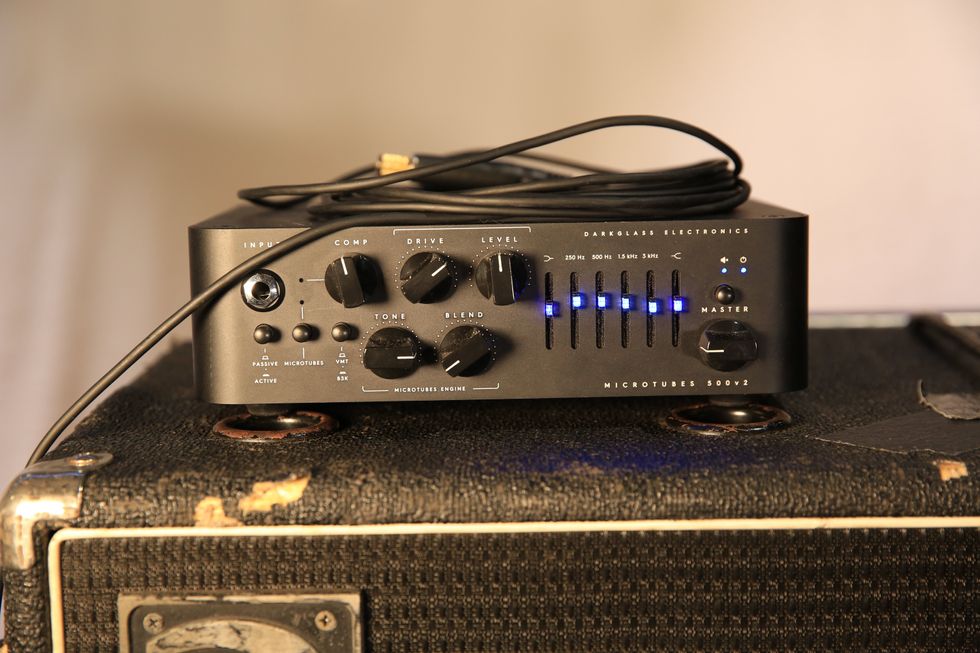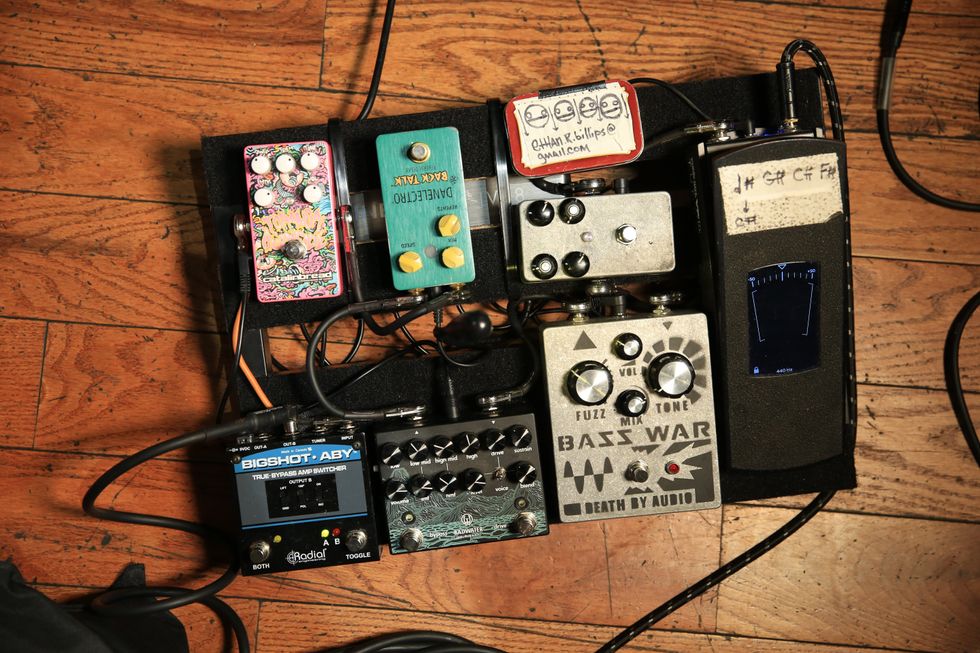It might surprise some that the first amp produced by Mesa/Boogie—a company widely known for offerings for guitarists—was a bass amp. Dubbed the Mesa 450 and clad in silver snakeskin, it was the very first amp built from scratch by company founder Randall Smith under the Mesa name. And the design concepts of its monster power section have influenced those of nearly every high-wattage bass amp that Mesa has released since. With the new Subway D-800, however, the company decided to take a different route—one that eschewed traditional tube-based circuitry for modern class-D design. The result is an amp with impressive clarity, power, and definition that lives up to its storied pedigree, all within a pint-sized package.
Take the “D” Train
The D-800’s class-D power amp provides a heady 800 watts without adding extraneous bulk. The D-800 weighs in at only 5 1/2 pounds, making it nowhere near the backbreaker that an all-tube amp with the same wattage would generally be. Simply slide it into its included padded bag, a gig bag, or a backpack, and you’re good to go.
Operating the amp is delightfully simple. Directly to the right of the 1/4" input jack is a trio of switches: an output mute, a -10 dB input pad for active pickups, and a deep switch for fattening the amp’s low end. It doesn’t take much effort to reach over and flip a switch, but I wouldn’t complain if the mute and deep modes were footswitchable on future versions of the amp. The amp’s tones are sculpted by a 4-band EQ section with controls for bass, low- and high-midrange frequencies, and treble, along with knobs for setting the input gain and maneuvering between flat and boosted voicings. When the voicing dial is set to the far left, the amp has a flat frequency response. Turning it further to the right provides a gradual boost to the highs and lows, resulting in a mid-scooped sound.
The amp’s rear panel houses two Speakon jacks with a switch for selecting either 2-ohm or 4/8-ohm loads. The amp will maintain its maximum rating of 800 watts when used with 2- or 4-ohm speaker loads, but the rating lowers to 400 watts when it’s in use with an 8-ohm load. There’s a direct output section that contains a phantom power protected XLR out tied to switches for selecting post or pre EQ, line or microphone levels, and ground-pin lifting. There’s also a pair of 1/4" jacks for connecting an auxiliary device and a set of headphones for confined-to-the-bedroom jamming.
The matching Subway Ultra-Lite 1x12 and 1x15 cabs we received are built from Italian poplar and feature specially tuned Tri-Port porting with aviation-style bracing. The 400-watt cabs are wrapped in Mesa’s traditional black-bronco vinyl and outfitted with a custom neodymium speaker and high-frequency horn with a +/- 2 dB rotary attenuator. Weighing in at a hair shy of 33 and 38 pounds, respectively, these cabs are some of the lightest Mesa has ever produced.
Transit Line Authority
After connecting the 1x12 and 1x15 cabinets to the D-800, I plugged in a Fender Precision and set the EQ and voicing controls to noon. Even with the input and master knobs conservatively set to 10 o’clock, the rig packed quite a wallop. The note separation and squeaky-clean clarity Mesa bass amps are known for was there in spades, but with a response that was more even than I’ve experienced from their amps in the past.
Ratings
Pros:
Lightweight and extremely portable. Gobs of power at the ready. Fantastic tones and versatility with simple controls. Approachable price point.
Cons:
Footswitchable mute and deep modes would be ideal additions.
Tones:
Ease of Use:
Build/Design:
Value:
Street:
$699
Ratings
Pros:
Excellent projection and superb volume. Very light and well built.
Cons:
Pricey.
Tones:
Ease of Use:
Build/Design:
Value:
Street:
$649 street
Mesa/Boogie Subway D-800 Head & Ultra-Lite 1x12
mesaboogie.com
The highs responded with an authoritative snap when I used a pick, and their edginess backed off naturally when I used my fingers to softly pluck melodic lines. In contrast, the lows were smooth and felt like they reached through the floor—so much so that I could hear objects rattling against the walls in the next room. If you’re worried the D-800 is going to win you more enemies than friends behind the local club’s sound booth, you shouldn’t be. The amp is capable of achieving the same responsiveness and fullness at lower volumes through careful adjustments with the input and master knobs.
The D-800’s voicing control wields the most power for shaping tones. There’s a wealth of genre-specific sounds living within either side of its range, spanning from mid-heavy rock grind and jazz warmth on the flat side, to scooped and springy funk-friendly slap tones towards its boosted range. Keeping the EQ knobs pointed straight up, I easily dialed in great tones befitting the aforementioned styles with the voicing control alone. (I used the EQ controls to tweak to taste afterwards.) As easy peasy as that sounds—and really, it was that easy—there was a noticeable loss of warmth in the mids when I set the voicing knob beyond 2 o’clock. I fixed this issue with no fuss by simply turning up the input slightly to thicken up the tone and round off the highs a little, and then lowering the master volume.
One of the best qualities of the D-800 is how well the EQ controls are voiced. I found that the high- and low-mid controls—when used separately—had a subtle yet efficient effect on the tone. For example, while nearly maxing out the high-mid knob with the low-mid control remaining at noon yielded a fair amount of extra upper-midrange, it wasn’t to an obnoxious level. Having used so many amps that offer similar midrange controls with higher ranges that are, quite frankly, unusable in many situations, this careful voicing was refreshing. The shape of the midrange frequencies is incredibly important within a bass tone, and the D-800’s controls are simple and effective enough to both satisfy seasoned players and teach novices how to use them capably to achieve strong, full tones that sit well in a mix.
The Ultra-Lite 1x12 and 1x15 delivered plenty of volume and power—more than enough for small- and mid-sized clubs. The neo speakers pushed a lot of air, even when I had the amp at lower volumes within the 9 and 11 o’clock range. Their horns projected nicely without any harshness, and never once succumbed to farting out at high volumes. Again, what impressed me the most was how exceptionally well they carried the low end through the floor of the room. The changes in resonance, volume, and low-end thickness I felt from just changing between light and heavy fingerpicking made the rig feel alive and breathing. Ultimately, the Ultra-Lites are simply great cabs that have the volume and projection of some others twice their size.
The Verdict
For bassists in the market for a portable high-powered amp that delivers clean and authoritative tones at any volume, the Subway D-800 is an excellent option that covers all of those bases and more. Its asking price of 700 bones should be relatively easier to swallow for budget-conscience bassists looking to adopt a Boogie amplifier into their rigs, but adding in the cost of the equally exceptional 1x12 and 1x15 cabs might make some opt for the head only. All that said, this new amp/cab combination from Mesa/Boogie is one to be reckoned with.
Watch the Review Demo:




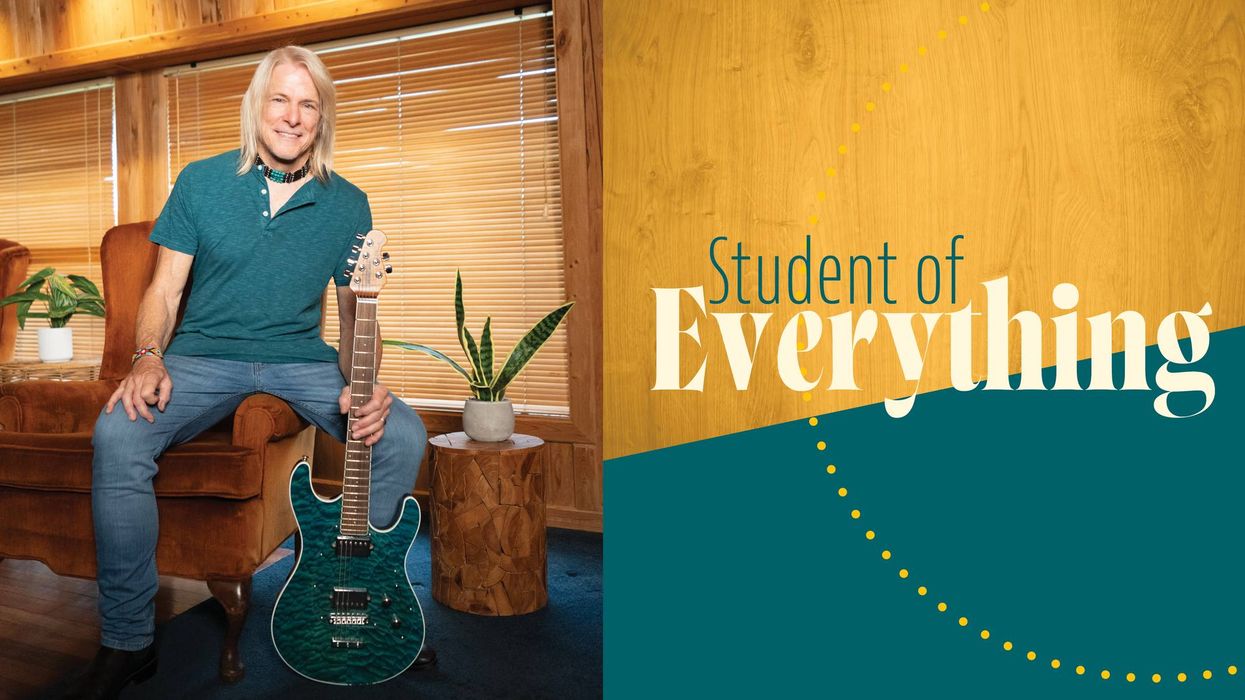



![Rig Rundown: AFI [2025]](https://www.premierguitar.com/media-library/youtube.jpg?id=62064741&width=1245&height=700&quality=70&coordinates=0%2C0%2C0%2C0)












 Shop Scott's Rig
Shop Scott's Rig





